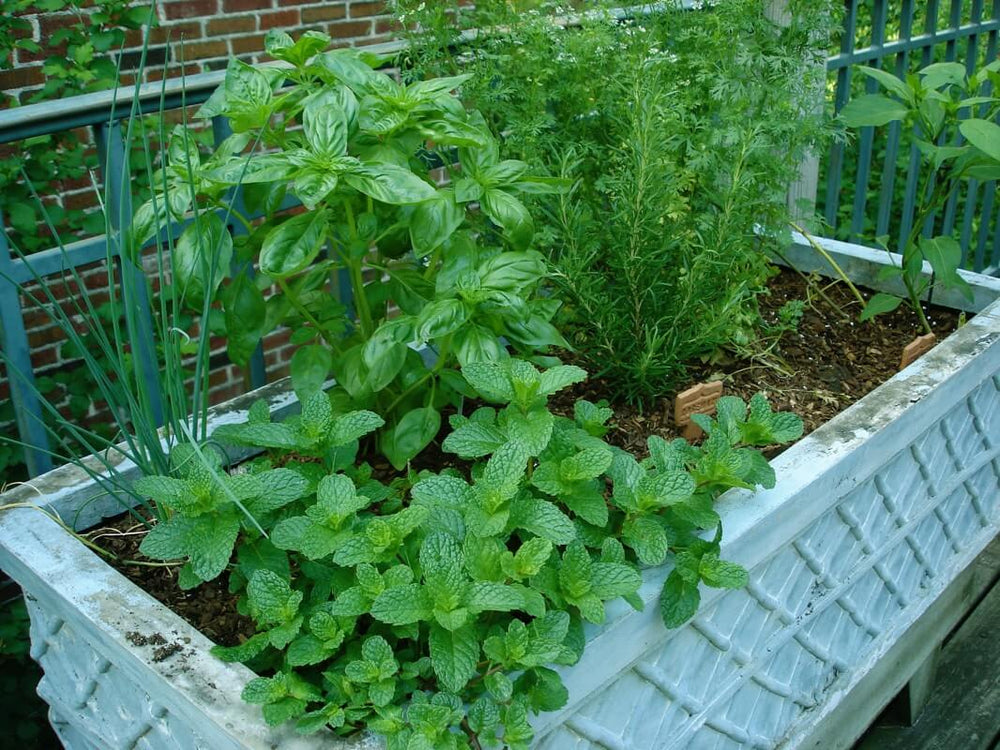There are so many great reasons to start an herb garden that will provide fresh herbs for everything from creating delicious dinners to brewing your own cups of tea. Plus, most herbs grow easily in a variety of conditions, making them ideal for new gardeners. Looking to start your own herb garden? Follow the steps below to get growing.
Select Your Space
Whether you live in a subdivision with a large backyard or an apartment with a balcony, herbs grow well just about anywhere that receives at least 6 hours of sunlight. Don't despair if the only spots you have to grow are a bit shady, though. Some herbs, such as cilantro, parsley, and mint, do just fine with 3 or 4 hours of sunlight. Check the plant tag for light requirements. You'll also want to have a water source nearby.
If possible, select a site near the kitchen so you can quickly snip a handful of oregano while making pasta sauce, or pluck a few basil leaves for bruschetta. Also, place your herb garden where you'll see it. Not only will that will inspire you to add interesting flavors to your meals, but you'll also be more likely notice when your plants need watering or if pests invade.
Choose Your Growing Style
If your yard offers rich, well-draining soil in a sunny space free from competing trees and shrubs, planting an herb garden in the ground should work beautifully. However, if your soil is less than ideal, a raised bed garden is an excellent alternative. Fill it with Miracle-Gro® Raised Bed Soil, which is just the right texture and weight for that kind of growing space.
If your available growing space is small, though, consider growing in pots instead. From wooden window boxes filled with trailing thymeto pretty ceramic pots full of parsley, containers offer many options. Follow these guidelines to choose the right size and style of container, and make sure it has holes for drainage. Fill pots with Miracle-Gro® Moisture Control® Potting Mix, which helps protect against over- and under-watering.
Pick Your Plants
Make a list of the flavors you enjoy, as well as what you'd like to do with your herbs. If cooking is your hobby, add herbs that make up classic culinary collections, like Herbes de Provence (rosemary, marjoram, thyme, oregano, and savory). Love making crafts? Add lavender to your herb garden to dry for sachets and wreaths. Of course, your fur babies will adore you for growing catnip and pet grass. Once you've made your list, head to your local Bonnie Plants® retailer or order plants online here.
Plant Your Herb Garden
Now it's time to plant your herbs! Look at the plant tag to learn how much space to leave between each plant for best growth and good airflow. Dig a hole, then plant the herb to the same depth as it was in its original container. Fill in around the plant, gently pat down the soil, then water well. A word of caution: With any member of the mint family (including lemon balm), you'll want to plant it in its own container to keep it from spreading and taking over the garden. If you're growing in a raised bed or in the ground, simply nestle the container into the soil.
Pamper Your Plants
Check daily to see if they need watering, especially during the summertime or if you're growing in containers, which tend to dry out more quickly than in-ground herb gardens or raised beds. Water thoroughly if the top inch of soil is dry. Then, to keep herbs growing strong throughout the season, be sure to feed them with every week or two with a liquid plant food such as Miracle-Gro® LiquaFeed® Tomato, Fruits & Vegetables Plant Food.
Harvest Frequently
Herbs respond well to harvesting, and will actually grow thicker and bushier with frequent snipping. For best results, harvest in the morning using a pair of garden shears or kitchen scissors. Never remove more than one-third of the plant, so that it can recuperate and continue growing throughout the season. Also, know that herbs taste best before flowering. By pinching back basil as soon as you see blooms beginning to form, for instance, you'll extend the herb's harvest life.
Congratulations—you've filled your garden with flavor and fragrance! For more great tips on growing, harvesting, and cooking with herbs, check out our Herbs section.







 Herbs
Herbs
 Vegetables
Vegetables
 Fruit
Fruit
 Flowers
Flowers
 Succulents
Succulents


